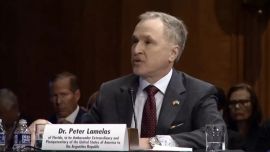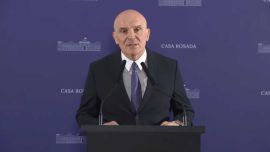The World Bank has trimmed its 2025 growth forecast for Argentina by almost a point to 4.6 percent, a prediction that nonetheless remains higher than estimates from local experts.
In a report issued October 7 in Washington, the global institution said that the domestic economy will be the one of the best-performing in the wider Latin American region, despite the downgrade.
“In Argentina, a remarkable economic rebound continues after two consecutive years of contraction, although deep challenges remain,” the World Bank stated in its report.
The organisation indicated that the projected increase is driven by a recovery in agriculture and early signs of improvements in consumption and investment.
“There are early signs of improvement in private sector consumption and investment, supported by the initial implementation of the government’s stabilisation plan, which has coincided with lower inflation and a fiscal surplus,” the report said, referring to President Javier Milei’s administration.
The World Bank also highlighted Argentina’s fierce fiscal discipline under Milei, a trait that sets it apart from the rest of the region.
“A different case,” the report noted, is Argentina, “which has recently made significant strides towards fiscal consolidation, achieving fiscal surpluses.”
The institution projects that Argentina will be the fastest-growing country in the region bar Guyana, with an estimated growth of 11.8 percent.
The REM (Market Expectations Survey), published monthly by Argentina’s Central Bank with input from local professionals and economists, recently cut the country’s growth forecast for 2025 to 3.9 percent.
Latin America and the Caribbean
Overall, Latin America and the Caribbean will grow by 2.3 percent this year — a slight increase compared to the 2.2 percent in 2024, but once again leaving the region as the world’s lowest regional performer.
This year, “the regional growth rate is expected to increase slightly,” said the report, while warning that “several individual economies are facing downward revisions in their forecasts.”
For 2026, growth is forecast at 2.5 percent, according to the World Bank.
For this year, Argentina stands out, with its 4.6 percent projection a significant improvement on the 1.3 percent contraction seen in 2024.
Of the two largest economies in the region, Brazil is losing momentum (2.4 percent compared to 3.4 percent in 2024), while Mexico is barely growing (0.5 percent projected this year).
“This partly reflects an external environment offering limited support, characterised by a slowing global economy, falling commodity prices, and rising uncertainty,” the World Bank noted.
Susana Cordeiro Guerra, recently appointed Vice-President of the World Bank for the region, noted that although governments in the region “have steered their economies through repeated crises while maintaining stability,” they must now “accelerate reforms.”
“The external environment remains complex, with a decline in global demand and commodity prices projected to fall by around 10 percent in 2025 and a further five percent in 2026 – negatively impacting key sectors,” the report added.
The World Bank advocates stimulating the growth of “transformational” businesses – those with ambitions beyond family-run microenterprises, which in some countries account for up to 70 percent of the national economy.
–TIMES/AFP/NA





















Comments